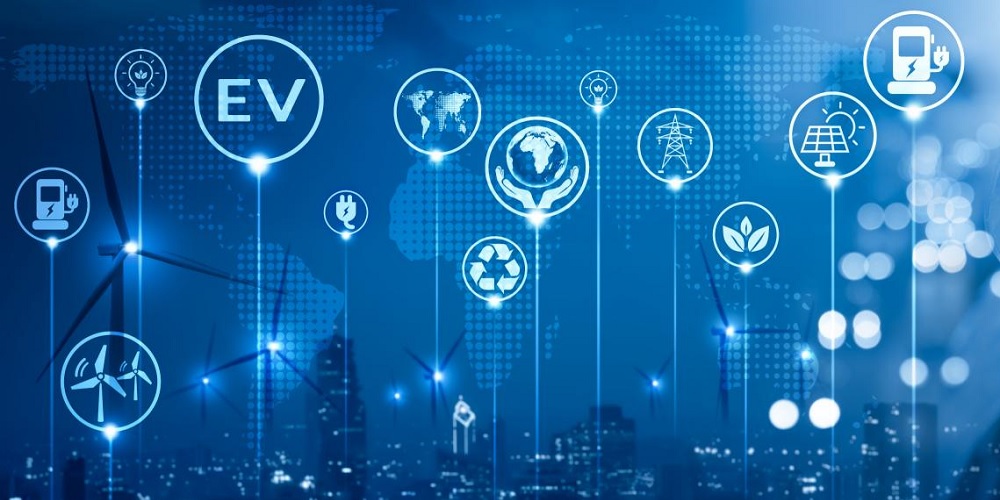3 trends in charging infrastructure in state and local entities

One of the biggest challenges with electric vehicles (EVs) for fleet managers is the availability of charging stations. While EV sales in 2022 increased by 65%, there are only 130,000 charging stations in the country. Progress is happening but it’s slow. Fleet drivers waiting for charging significantly reduces productivity, and across the country, just 6,300 fast chargers were added in 2022. On top of that, 75% of those added were Tesla chargers, which are incompatible with most government fleet vehicles. Nationwide, there are just 28,000 public fast charging stations.
For local entities with small geographical footprints, returning to home base to charge may be a minor issue, but for large municipalities and statewide entities, the lack of public charging stations can be a serious impediment.
There are actions that government entities can take to overcome these challenges and help build the charging infrastructure to accelerate sustainability goals. In this article, we look at what’s in the works and other challenges that must be overcome.
Three trending government actions to increase charging stations
These specific government actions are helping pave the way for expanding the charging station network.
1. Infrastructure bill
The recently passed infrastructure bill commits $7.5 billion to build 500,000 more EV charging stations by 2030.
2. National Electric Vehicle Infrastructure Formula (NEVI)
There is funding in the form of grants through the NEVI. Every state is participating in it, which provides $885 million in funding to build public charging stations along designated alternative fuel corridors to increase accessibility along major highway routes.
3. Incentives and grants
Evolving state laws and incentives remain in place to help accelerate the construction of charging stations. For example, a Colorado grant fund will pay 80% of the costs for state and local government agencies, transit agencies, and corporations. You can see a current list of state incentives, grants, and financing options here.
Five challenges in meeting EV charging station goals
There are still significant challenges ahead when it comes to building the infrastructure to support EV fleets. Here are four of the biggest ones.
1. Installation pace
To meet the goals laid out by the federal government and most state entities, the number of charging stations being built and the speed at which they are being installed must accelerate significantly. The charging infrastructure needs to support federal goals of cutting greenhouse gas emissions (GHGs) by 50% by 2030. To meet this goal, more than 12,800 charging stations would need to be installed every quarter through 2030—more than double the current pace.
2. Charging station locations
Most public charging stations are located in high-income areas. This risks disenfranchising groups of citizens and slowing the adoption of EVs in lower-income and rural areas, restricting the viability of EV ownership.
Higher-income homes also tend to use home chargers for overnight use instead of relying on public charging stations. However, those who do not use home chargers tend to charge during the day, when the cost per kWh is at the highest. According to a McKinsey study, electricity purchased at public charging stations can cost five to ten times more than private ones.
3. Lack of fast-charging stations
One challenge is the need for direct-current fast charging stations (DCFCs). These can charge an EV from empty to 80% in twenty minutes to an hour. Yet, DCFCs represent a small percentage of installations, and most plug-in hybrid electric vehicles (PHEVs) do not support fast charges.
The more common level 1 charging stations can take forty hours or longer to charge to 80% for battery-operated EVs (BEVs) and up to six hours for PHEVs. Level 2 charging stations can take between four and ten hours for BEVs and one and two hours for PHEVs.
In addition, fast charging stations are significantly more expensive and consume more energy.
4. Grid capacity
Currently, few power grids can deliver the large amount of electricity needed to charge multiple EVs at high rates simultaneously. This is especially true in the local neighborhoods, business districts, and fleet depots where EV charging will be concentrated.
Upgrading grids is expensive. McKinsey estimates grid upgrades for a single public DCFC could exceed $150,000.
5. Falling gas tax revenues
Since consumers are adopting EVs and other fuel-efficient vehicles, gas tax revenues are falling. These fuel taxes typically provide about 40% of the revenue that states direct toward transportation spending, so this can create significant shortfalls.
A study conducted by the state of New York shows gas tax revenue peaking in FY 2024 and declining every year thereafter. To make up for lost revenue, some states are increasing renewal fees for EVs, while others are considering adding a pay-per-mile tax on EVs.
The Congressional Budget Office projects that without increases in the gas tax or alternate revenue sources, the highway trust fund will be $140 billion short by 2031.
Sourcewell can help you be part of trends in charging infrastructure
It will take an intense focus on building out the charging infrastructure by private companies and government agencies to meet sustainability goals. Agencies will need to be proactive in encouraging and funding development. Meeting these goals requires a significant acceleration of procurement, purchasing, and deployment.
Sourcewell's cooperative purchasing agreements can help save time and money using the combined buying power of more than 50,000 state and local government agencies and educational institutions. There are ready-to-use contracts for EVs, hybrid vehicles, and charging station suppliers and vendors. Download the Public Fleet Electrification Guide to learn more.
Sourcewell awards contracts in electric vehicle supply equipment. These contracts assure that government entities can take the first step in creating the infrastructure to support green initiatives. See how Sourcewell can save you time and money while getting the fleet equipment that you need already on contract.


